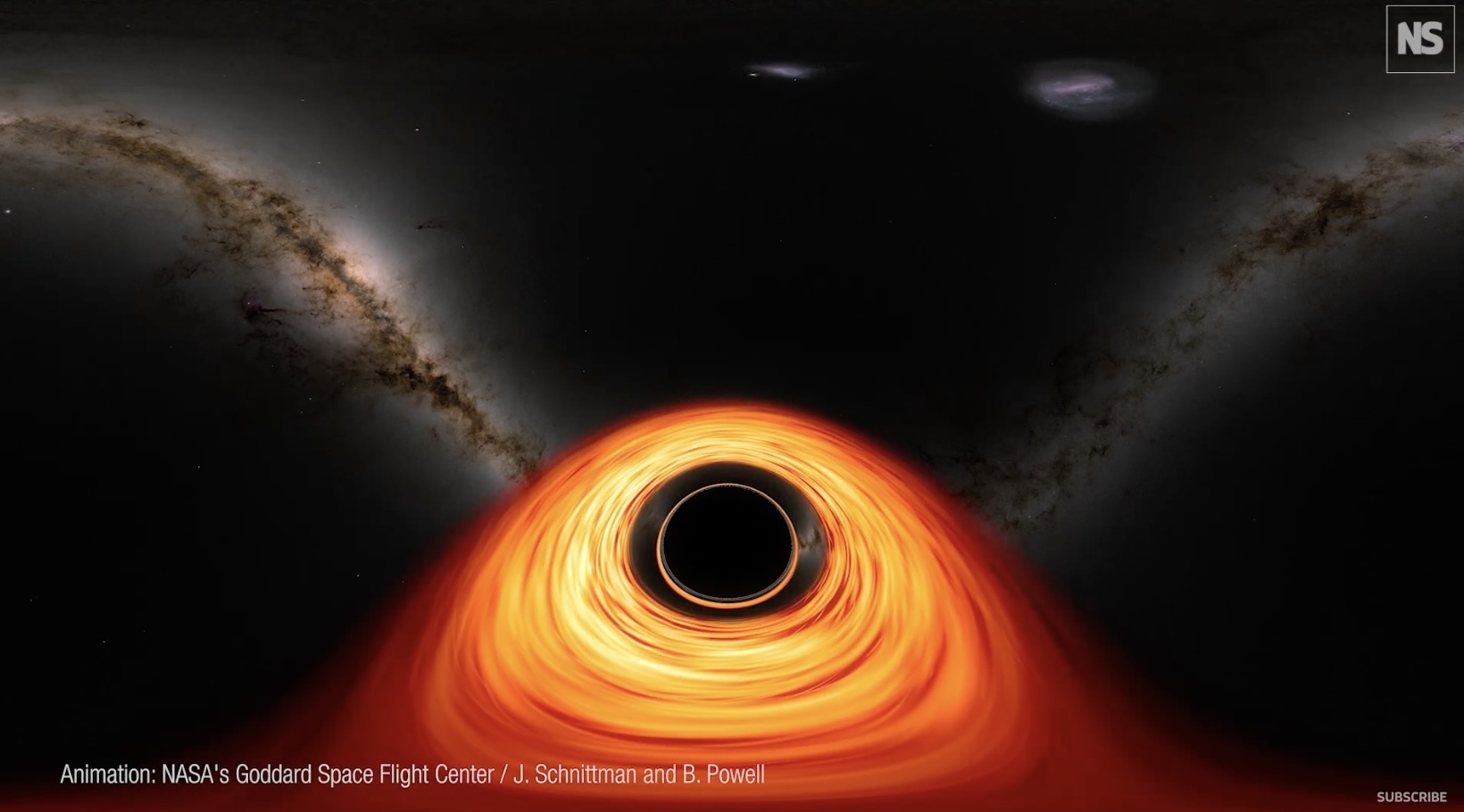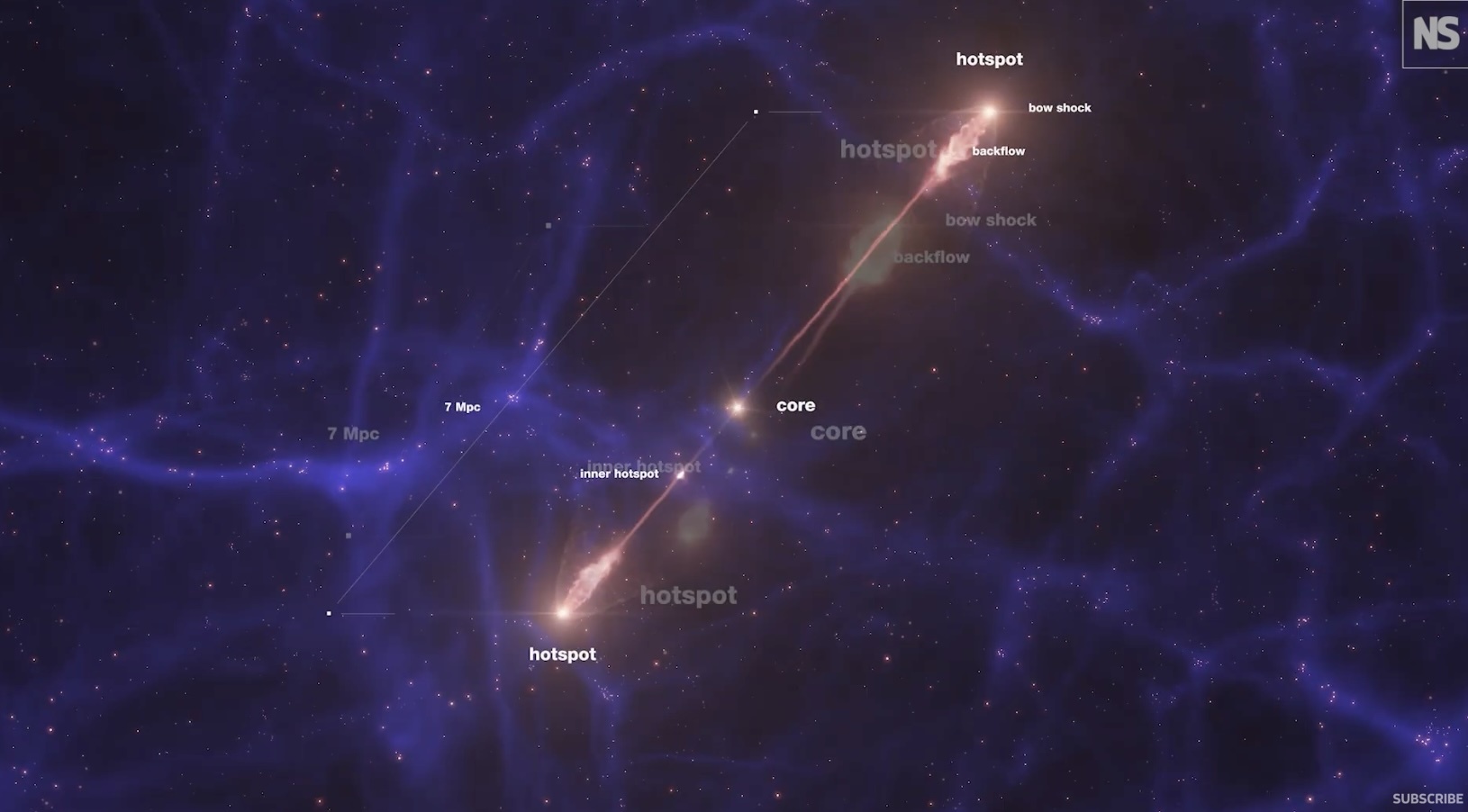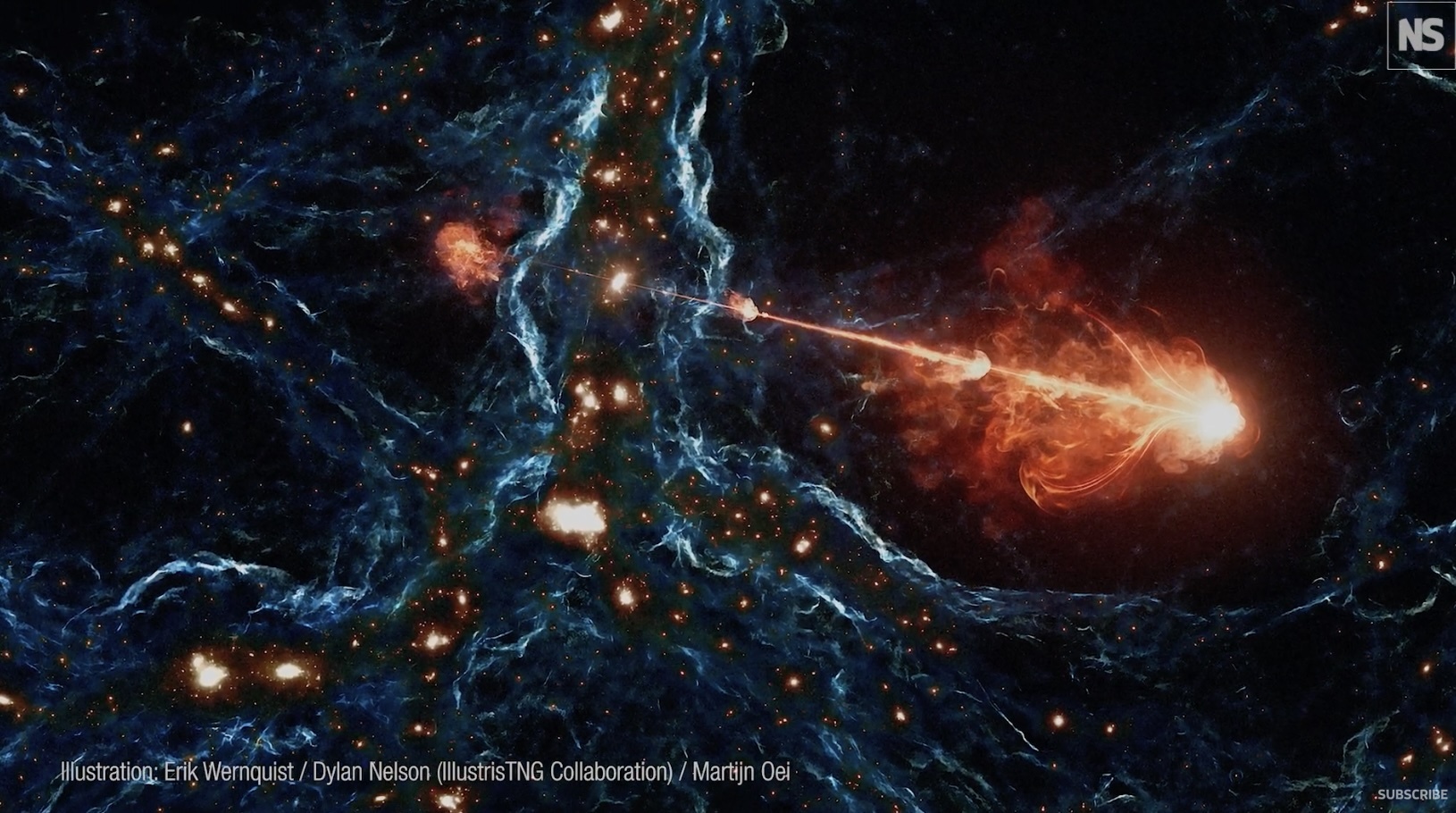20.09.2024

Spanning 23 million light years, or 220 Milky Way galaxies, a set of giant, newly discovered black hole jets known as Porphyrion may change our understanding of black holes and the structure of the universe


A pair of jets blasting out of a black hole spans 23 million light years, the equivalent of 220 Milky Way galaxies in length. This is so large that it may change our understanding both of black holes and the structure of the universe.
“If you think of jets as a thing, then you could say this is the largest object that we know of in the universe,” says Martin Hardcastle at the University of Hertfordshire, UK.
The jets, which Hardcastle and his colleagues have named Porphyrion, come from a black hole in a distant galaxy, some 7.5 billion light years from Earth. The light reaching us from them now started its journey when the universe was just 6.3 billion years old, only about half the age it is now.
The researchers identified the jets, as well as at least 10 other sets of jets that are also millions of light years across, using the Low Frequency Array (LOFAR) telescope, which consists of thousands of radio antennas across many European countries. Follow-up observations using telescopes in India and Hawaii then helped to locate the host galaxy.
To produce such vast jets, the black hole responsible would have needed to ingest about a sun’s worth of matter each year for a billion years, says Hardcastle. As matter falls into the black hole over this time frame, some of it will be twisted and accelerated by the black hole’s magnetic field, blasting it out into space to form the jets.
In the early universe, matter was more closely bunched together than it is in our current cosmos, which makes the persistence of the jets over such a long time period without being interrupted by another cosmological object unusual, says Hardcastle. “This is back in a period of the universe where galaxies are quite active. There’s a lot going on, and yet this black hole has managed just to keep blasting away more or less unchecked for a billion years,” he says.
“I would have thought something like this was impossible,” says Laura Olivera-Nieto at the Max Planck Institute for Nuclear Physics in Germany. “Simply because it seems too big to have maintained the [jet] for so long.”
Even simulating how such a vast beam formed or what its effects might be is extremely difficult because of the distances involved, she says. “It’s truly a challenge to try to understand how this is physically possible. We cannot put it in a computer, it’s too big.”
Porphyrion extends so far that it could affect the formation of other galaxies, injecting energy and magnetic fields into other regions, says Hardcastle. This could also help explain the mystery of where the universe gets its magnetic fields from. “It dumps energy and magnetic fields and particles into the voids between the galaxies,” says Hardcastle. “That’s a mechanism for transporting magnetic fields from very, very small scales to very large scales.”
These jets might also shake up some cosmological theories, which assume that objects like black holes don’t have influence across so much of the universe.
“A result like this one shows that if you want to understand how the universe’s large-scale structure forms and evolves, you then also have to think about how the smaller components of it, like the systems that would make such an outflow, influence it,” says Olivera-Nieto.
Quelle: NewScientist
